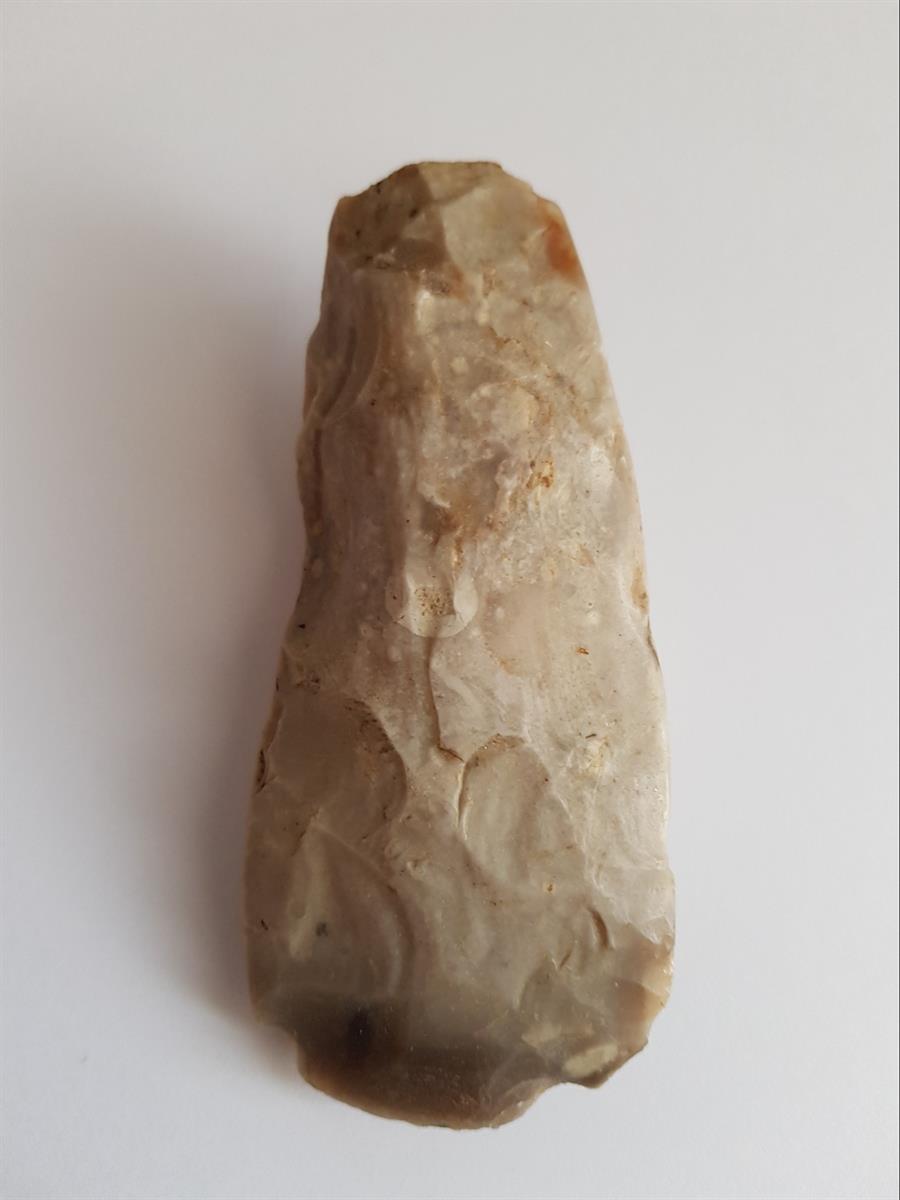 Flint axe, c 5,000 years old, found on the edge of Lyminge in 2002 (© Rob Baldwin)
Flint axe, c 5,000 years old, found on the edge of Lyminge in 2002 (© Rob Baldwin)
We know too there were farmers living in Lyminge from at least around 5,000 years ago because two flint axes have been found in and around the village. But ancient DNA now indicates that some 500 years later, most of the descendants of these first farmers were replaced by new people, immigrants from Europe who knew how to make bronze. A barrow burial from this time has been found on Tayne Field close to the site of the modern primary school, and a bronze sword was recovered from the surrounding ditch. The slight mound in the grass beside the tarmac path that crosses Tayne Field by the school is a restoration of the barrow that was carried out after the grave was excavated in 2014.
Another burial from this period was found on the edge of the excavation site close to Church Road. Although this was a single individual, it is perhaps quite likely that other people were buried close by within sight of the barrow mound. Their graves may lie undiscovered under the roads, houses and gardens roundabout. A further possible barrow has been identified on the edge of the village on the ridge to the right of Canterbury Road as you head towards Elham, perhaps from this period or may be later in date. But as yet there is no evidence to show where settlement was located in this period.